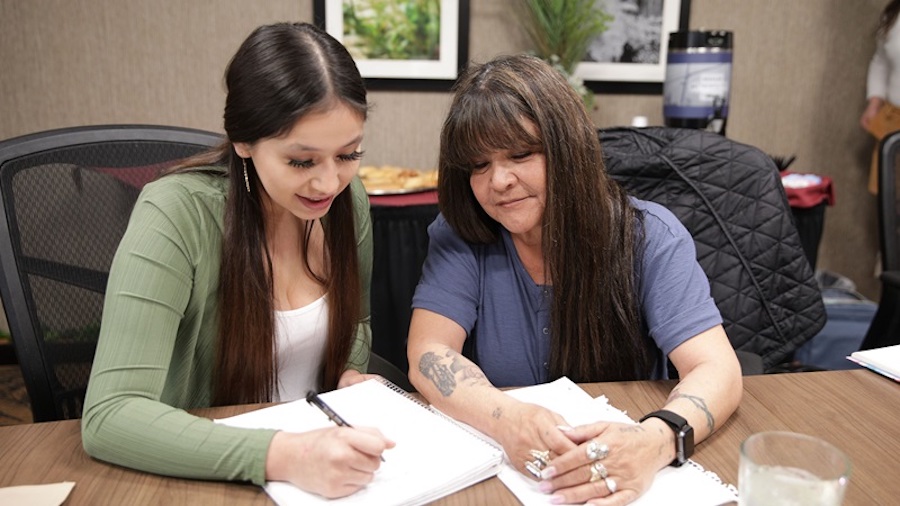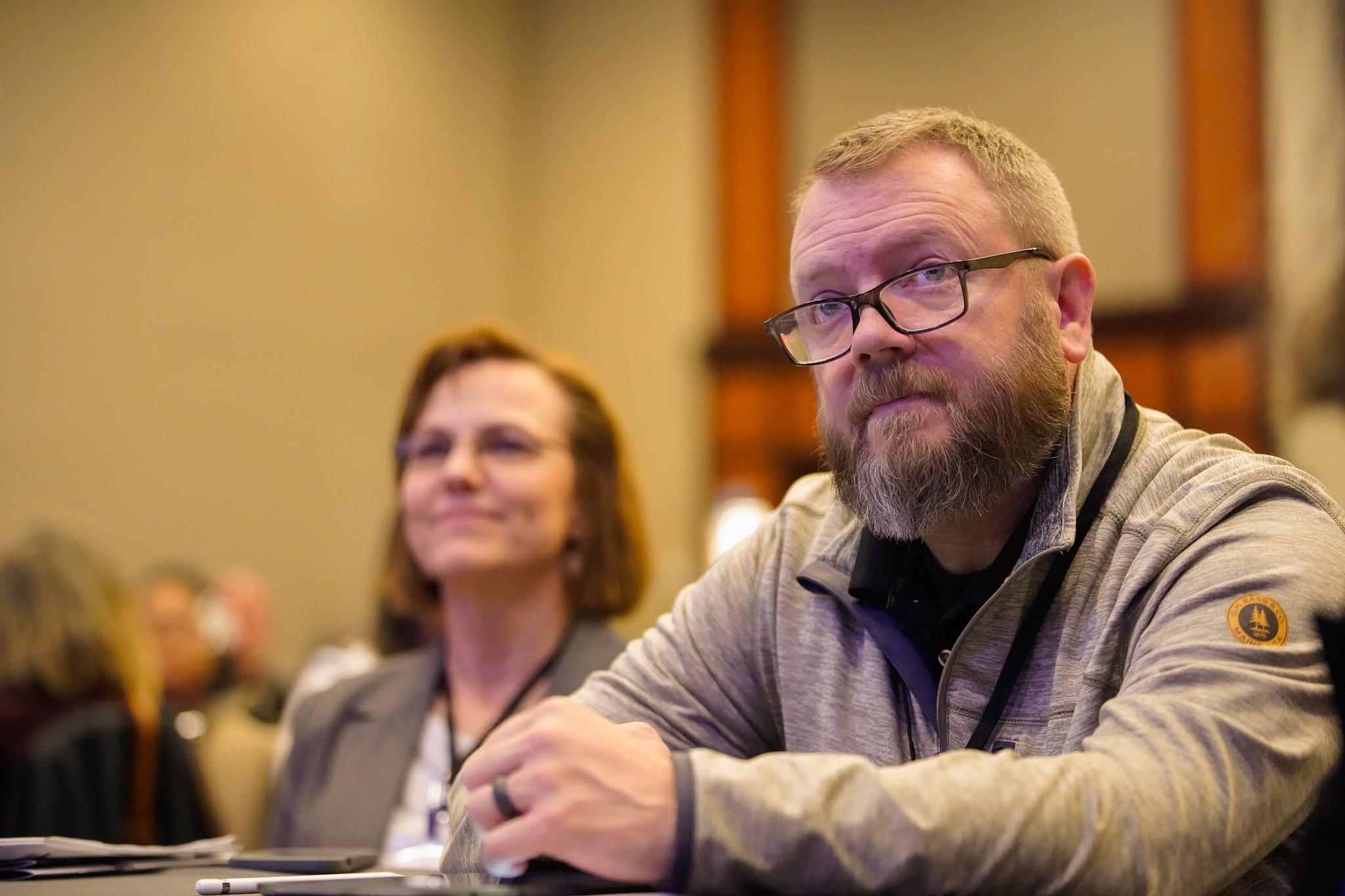
- Details
- By Elyse Wild
- Finance
When it comes to business lending in Indian Country, character may count more than credit scores.
That’s according to a report from the Minneapolis-based Center for Indian Country Development, which reveals that character-based risk assessment may be a more accurate predictor than credit profile and income when it comes to business lending by Native Community Development Financial Institutions (CDFIs).
The underlying study analyzed loan data on more than 2,000 loans issued by 11 Native CDFIs between 2015-2020. Half of the loans in the study of 484 business, 305 home, and 1,276 consumer loans were less than $5,500.
In the study’s analysis of business loans, researchers found that business longevity and credit scores were predictors of loan repayment outcomes. But the study also found that character scores — an assessment of a client’s role and reputation in the community, support networks, and relationship with the CDFI — emerged as an even more important predictor of loan delinquency.
“In fact, for business loans in our analysis, character-based criteria predicted loan delinquency better than traditional credit scores,” the CICD researchers wrote.
Laurel Wheeler, a CICD research fellow, said the results speak to how traditional means of measuring a borrower’s risk can exacerbate economic inequities.
“This finding around character score provides further evidence of the weaknesses of the supposedly objective measures of risk assessment in Indian Country,” Wheeler said. “In our data, we find a relatively weak relationship between the credit score and the character score, which means there are a lot of borrowers with low or no credit scores, but have high character scores. On average, those loans do well.”
Native communities have been historically excluded from traditional banking and financial products. According to the Federal Deposits Insurance Corporation’s 2019 survey, American Indian and Alaska Native communities had the highest rates of unbanked households — nearly 16.3% — of any race group in the nation. The problem is most acute on reservations, which are often far from mainstream banks and ATMs, the study notes.
In the absence of traditional banks, Native CDFIs have been critical to providing access to capital in Native American communities. Entrenched in the communities they serve, Native CDFIs often take a more expansive approach to measuring loan risk than mainstream banks and credit unions, which primarily rely on credit scores and income levels.
“We truly believe that a lot of the risk that people see within our communities is manufactured,” Lakota Vogel, executive director of Four Bands Community Fund, a South Dakota-based Native CDFI participating in the study, said in a statement.
Wheeler says the CICD study fills a gap where there is little quantitative research on the Native CDFI industry.
“The real value in this research is showing external parties what Native CDFIs are doing within their communities,” Wheeler said. “To develop policy that is going to impact Native CDFIs positively, lawmakers need to understand how they work and what their impact is. And, these practices from Native CDFIs could be adopted as a model for lending in other underbanked communities.”
‘Who are their people?’
Russ Seigal is the executive director of The Sequoyah Fund, Inc., a Native CDFI serving the Eastern Band of Cherokee Indians in North Carolina. The Sequoyah Fund offers a variety of lending products for tribal members, including small-business loans, credit-builder loans, housing rehab loans and auto loans. According to Seigal, before COVID0-19, the fund deployed up to $1.5 million in loans annually, averaging $34,700 per loan. Last year, they deployed $3.3 million.
“We have people come in all the time who say, ‘I’ve never borrowed money. I don’t have any credit. Can I do this?’ or ‘I have rotten credit, and I need a car loan,’” Siegla said. “And we say, ‘Yes, we will figure out a way.’”
That approach, Seigal says, is the essence of a Native CDFI.
“A bank by default begins with a ‘no,’ until you convince them to say, ‘yes,’” Siegal said. “We start with, ‘How can we make this work?’”
The Sequoyah Fund uses a “traffic signal-like” system to determine creditworthiness that takes into account a business experience, history of success, business plan, and history of working with the fund.
 The Sequoyah Fund, one of the 11 Native CDFIs to provide data in the study, uses a “traffic signal-like” system to determine creditworthiness that takes into account a business experience, history of success, business plan, and history of working with the fund, according to executive director Russ Seigal, pictured above. (Photo: Native CDFI Network)
The Sequoyah Fund, one of the 11 Native CDFIs to provide data in the study, uses a “traffic signal-like” system to determine creditworthiness that takes into account a business experience, history of success, business plan, and history of working with the fund, according to executive director Russ Seigal, pictured above. (Photo: Native CDFI Network)
Before applying for a business loan, Sequoyah Fund requires clients to go through a business start-up course and develop a business plan. The plan itself isn’t necessarily a determining factor, Siegal says, but it allows clients to demonstrate their ability to follow through.
“We know that if someone isn’t willing to put in the effort to write a business plan, they’re going to give up pretty easily when they hit a roadblock in their business,” Seigal said.
Seigal says that character-based lending works both ways.
“I can give you a dozen specific examples of times when I have taken a loan to the board and said, ‘This looks great on paper or this looks terrible on paper, but I want you guys to weigh in,’” Siegal said. “The first question out of the board’s mouth is ‘Who are their people?’”
That answer can give the CDFI a clearer picture of a person’s ability or willingness to repay the loan. For example, a person with an unfavorable history in the community who looks lendable on paper may not be approved; a person who appears less favorable on paper, but with a good record in the community is more likely to walk away with a loan.
“The quantitative measure doesn’t always tell the whole story,” Seigal said. “That is the beauty of a CDFI — we make decisions based on real people and those qualitative discussions are where the rubber meets the road — 99% of the time, they are right.”
For potential borrowers who need to improve their credit scores, the Sequoyah Fund’s credit-building loans walk them across the bridge from unlendable to lendable.
“Often, we find that people who come from a poor financial background or a complete lack of understanding of how money works decide they want to turn it around,” Seigal said. "That generational shift is powerful."
The loans are up to $2,500 with a 4% fixed interest rate and a two-year term. In addition, borrowers must take a credit-builder course and participate in one-on-one credit counseling to learn how to strategically pay down their debt. Once they complete the first loan period, borrowers can again take out $2,500 to continue paying down their debts.
When it comes to operationalizing character-based loan metrics, CICD’s Wheeler said the assessment is dependent on the relationships Native CDFIs have with their communities — a factor that may not be replicable in all communities.
“It needs to be done really carefully,” Wheeler said. “Character-based lending appears to work in this context because Native CDFIs have really close relationships with their communities and have deep knowledge of prospective borrowers. Without those strong relationships, purely subjective measures of risk may introduce more bias, and we want to avoid that.”
